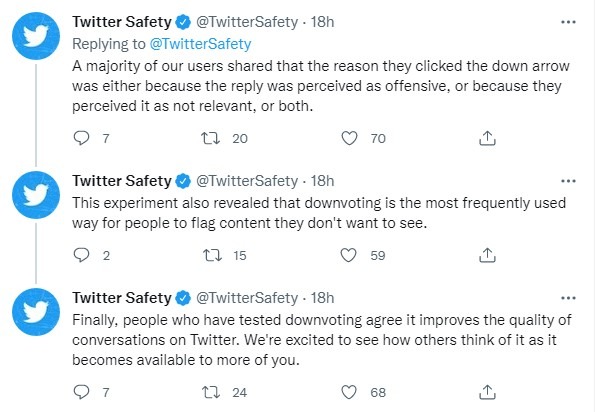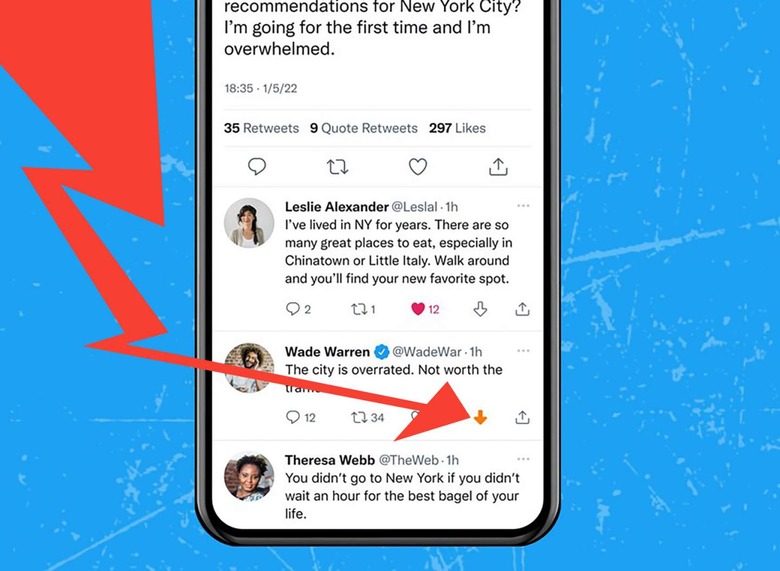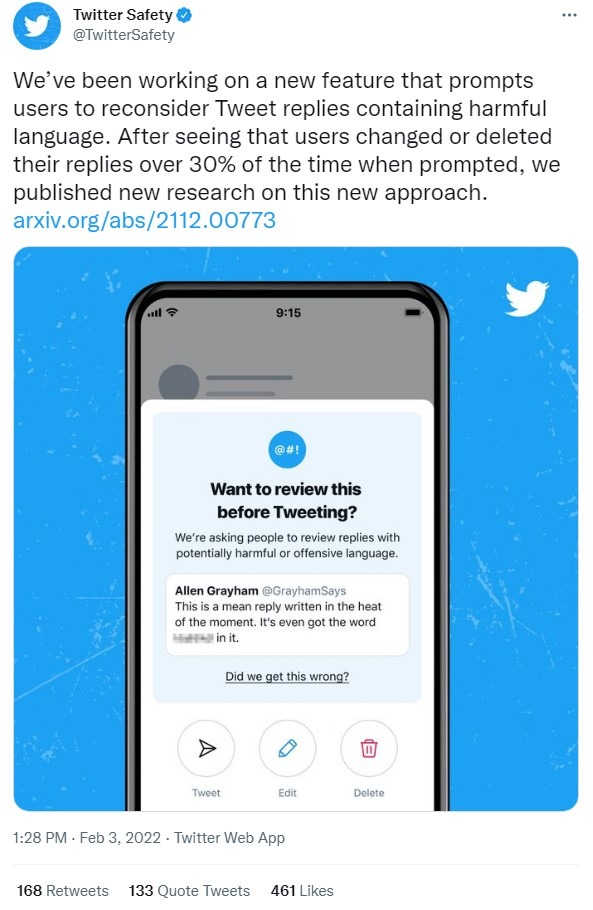Twitter Downvote Button Goes Global: What It Does
Last summer, Twitter started testing both upvote and downvote options on tweet replies. Now, several months later, the downvote button is rolling out on a global scale – while the upvote button is nowhere to be seen. Twitter says this is still a test – or rather a global "experiment" – but the company has also shared what it's learned about the usefulness of the downvote button in the months it's been in limited testing among select groups of people.
First thing's first: even though the downvote button is rolling out globally, there isn't much about the way it functions that's changing. Downvote counts won't be made public, so no one will really know just how much a certain Twitter post has been downvoted. Twitter Safety says that a "majority" of users said the reason they downvoted specific replies is because the reply was considered offensive, irrelevant to the topic at hand, or both.

Twitter says that the experiment "also revealed that downvoting is the most frequently used way for people to flag content they don't want to see." Moreover, that same group of testers seems to agree that downvotes improve the quality of Twitter conversations, which is why we're seeing Twitter go ahead with a global test.

In a way, this makes sense because the way Twitter has implemented downvotes kind of gives us the best of both worlds. Downvotes can help sink replies that aren't helpful or are offensive, but without a public readout of a comment's score (like we see on Reddit), there's less of a chance of people dogpiling a reply just because they've seen that it's heavily downvoted already. For now, there's no word on when Twitter plans to move this feature out of the experimental phase, but regardless, more users on web, iOS, and Android should have the ability to downvote comments soon.

In other Twitter news, the company also announced today that it's developing a new feature that will automatically detect when a Twitter post contains harmful language and prompt users to reconsider their comment before publishing it. In testing, Twitter says that 30% of users who saw this prompt either "changed or deleted" those replies in response, which is a pretty big figure. Twitter even published research on this feature through Cornell University, in a paper called "Reconsidering Tweets: Intervening During Tweet Creating Decreases Offensive Content."
So, we have a couple of Twitter features in the works that should make conversations more productive and less vitriolic – or at least that's the hope. We'll let you know when Twitter shares more news about these features in the future, but for now, look for that downvote button to go live across the web, iOS, and Android implementations of Twitter soon.
